
On Saturday - Heritage Day - our humans took us on a spring cleaning weekend visit to Suiderstrand. On the way we stopped for breakfast at
Dave's Country Kitchen on the Red Windmill farm shop and nursery just outside Napier where we were able to do some exploring

while the humans had poached eggs and Brie cheese and scrambled eggs and smoked salmon.

Then we arrived at one of our favourite places in all the world - Daisy Cottage. It was surrounded by flowers. These purple ones are Sour Figs (
Carpobrotus acinaciformis).

Lots and lots of Wild Cineraria or Strandblommetjies (
Senecio elegans),

and lots of
Felicia amoena subsp
latifolia with hairy leaves.

The Alph got down to the business of fixing the loo ...

while we waited very patiently for a walk. Hurry up!

The Food Lady was doing some flower photography. These
Sebaea aurea flowers are only about 10 mm wide. Come on!

This is Hottentotskool (
Trachyandra divaricata). Now can we go? Please!

At last they set out. It was quite windy and there were lots of bluebottles and stuff on the beach including a dead seal or two - all the better for us to smell.

We noticed that they were doing a bit of dune reclamation to repair the damage of decades of beach driving here. You can see Pietie's se Huis (re-christened Lagoon House by SANParks) in the distance.

More Strandblommetjies (
Senecio elegans).

A dip in Papkuil. We are always relieved to find that dogs are still allowed here! The SANParks restcamp looked pretty empty although there were a few people in Pietie's se Huis.

The local fisherman always leave these pretty Pyjama catsharks on the beach to die - which is terribly sad because they do no-one any harm and play a vital role in the ecosystem. SANParks should try and educate the fisherfolk because we see scores of them discarded on the beach. They could easily be thrown back again. According to George Branch pyjama catsharks are nocturnal and are usually found on the seabed in shallow rocky areas. They eat small reef fish and octopus. You often see their brown egg cases that are attached to seaweed with tendrils.

Dinner alfresco.

As Heritage Day is now known as National Braai Day, we braved the wind to set up the braai,

and while we did some mousing in the fynbos, the humans sipped wine and enjoyed the view from Daisy.

Me and the Alph.

The next morning it was a bit drizzly. The
Sebaea aurea plants were well and truly closed when we set out for our Sunday morning walk

through the streets of Suiderstrand - marvelling at some of the hideous buildings that pop up there.

but pretty soon we were out of suburbia and into the veld. More strandblommetjies lining the road up to the water tanks.
 Nemesia affinis
Nemesia affinis flowers.

Up on the limestone ridge, it started to get warmer and the sun came out but out to sea we could see a thick bank of fog. Here is Dougal mousing behind some Kapokbossies or Wild Rosemary (
Eriocephalus paniculatus) bushes.

This bright red tuber is from a
Wachendorfia paniculata plant which clearly shows where the family name Bloodroot comes from. I wonder what makes it so red?

Another interesting red plant for the Food Lady was this member of the Hibiscus family,
Hermannia trifoliata.

Another daisy growing up on the limestone slabs: the Sea Strawflower (
Helichrysum retortum).

We soon found ourselves on the very nice hiking path up here - the Rasperpunt Hiking Trail. There are slabs of "Bredasdorp Formation" limestone that precipitated out of the sea about 5 million years ago which is quite tough on our Scotty pads.

Tea overlooking the wreck of the Meisho Maru, The fog bank was still out there looking mysterious.

It was getting warmer and we were both happy to get back to the sea. We had a dip while the humans did some bird watching.

Stopping to smell the flowers ...

A teeny tiny Thread Iris (
Moraea setifolia).

Hundreds of them growing on the path of the trail.

Back to Suiderstrand.

We all admired the shiny new blind. Then it was time to go back to Cape Town and Dawnie who stayed at home with Simon who looked after her and the cat.

The fog bank was also hanging around Table Mountain when we got home.
 On Saturday - Heritage Day - our humans took us on a spring cleaning weekend visit to Suiderstrand. On the way we stopped for breakfast at Dave's Country Kitchen on the Red Windmill farm shop and nursery just outside Napier where we were able to do some exploring
On Saturday - Heritage Day - our humans took us on a spring cleaning weekend visit to Suiderstrand. On the way we stopped for breakfast at Dave's Country Kitchen on the Red Windmill farm shop and nursery just outside Napier where we were able to do some exploring  while the humans had poached eggs and Brie cheese and scrambled eggs and smoked salmon.
while the humans had poached eggs and Brie cheese and scrambled eggs and smoked salmon. Then we arrived at one of our favourite places in all the world - Daisy Cottage. It was surrounded by flowers. These purple ones are Sour Figs (Carpobrotus acinaciformis).
Then we arrived at one of our favourite places in all the world - Daisy Cottage. It was surrounded by flowers. These purple ones are Sour Figs (Carpobrotus acinaciformis). Lots and lots of Wild Cineraria or Strandblommetjies (Senecio elegans),
Lots and lots of Wild Cineraria or Strandblommetjies (Senecio elegans), and lots of Felicia amoena subsp latifolia with hairy leaves.
and lots of Felicia amoena subsp latifolia with hairy leaves. The Alph got down to the business of fixing the loo ...
The Alph got down to the business of fixing the loo ... while we waited very patiently for a walk. Hurry up!
while we waited very patiently for a walk. Hurry up! The Food Lady was doing some flower photography. These Sebaea aurea flowers are only about 10 mm wide. Come on!
The Food Lady was doing some flower photography. These Sebaea aurea flowers are only about 10 mm wide. Come on! This is Hottentotskool (Trachyandra divaricata). Now can we go? Please!
This is Hottentotskool (Trachyandra divaricata). Now can we go? Please! At last they set out. It was quite windy and there were lots of bluebottles and stuff on the beach including a dead seal or two - all the better for us to smell.
At last they set out. It was quite windy and there were lots of bluebottles and stuff on the beach including a dead seal or two - all the better for us to smell. We noticed that they were doing a bit of dune reclamation to repair the damage of decades of beach driving here. You can see Pietie's se Huis (re-christened Lagoon House by SANParks) in the distance.
We noticed that they were doing a bit of dune reclamation to repair the damage of decades of beach driving here. You can see Pietie's se Huis (re-christened Lagoon House by SANParks) in the distance. More Strandblommetjies (Senecio elegans).
More Strandblommetjies (Senecio elegans). A dip in Papkuil. We are always relieved to find that dogs are still allowed here! The SANParks restcamp looked pretty empty although there were a few people in Pietie's se Huis.
A dip in Papkuil. We are always relieved to find that dogs are still allowed here! The SANParks restcamp looked pretty empty although there were a few people in Pietie's se Huis. The local fisherman always leave these pretty Pyjama catsharks on the beach to die - which is terribly sad because they do no-one any harm and play a vital role in the ecosystem. SANParks should try and educate the fisherfolk because we see scores of them discarded on the beach. They could easily be thrown back again. According to George Branch pyjama catsharks are nocturnal and are usually found on the seabed in shallow rocky areas. They eat small reef fish and octopus. You often see their brown egg cases that are attached to seaweed with tendrils.
The local fisherman always leave these pretty Pyjama catsharks on the beach to die - which is terribly sad because they do no-one any harm and play a vital role in the ecosystem. SANParks should try and educate the fisherfolk because we see scores of them discarded on the beach. They could easily be thrown back again. According to George Branch pyjama catsharks are nocturnal and are usually found on the seabed in shallow rocky areas. They eat small reef fish and octopus. You often see their brown egg cases that are attached to seaweed with tendrils. Dinner alfresco.
Dinner alfresco. As Heritage Day is now known as National Braai Day, we braved the wind to set up the braai,
As Heritage Day is now known as National Braai Day, we braved the wind to set up the braai, and while we did some mousing in the fynbos, the humans sipped wine and enjoyed the view from Daisy.
and while we did some mousing in the fynbos, the humans sipped wine and enjoyed the view from Daisy. Me and the Alph.
Me and the Alph. The next morning it was a bit drizzly. The Sebaea aurea plants were well and truly closed when we set out for our Sunday morning walk
The next morning it was a bit drizzly. The Sebaea aurea plants were well and truly closed when we set out for our Sunday morning walk through the streets of Suiderstrand - marvelling at some of the hideous buildings that pop up there.
through the streets of Suiderstrand - marvelling at some of the hideous buildings that pop up there. but pretty soon we were out of suburbia and into the veld. More strandblommetjies lining the road up to the water tanks.
but pretty soon we were out of suburbia and into the veld. More strandblommetjies lining the road up to the water tanks. Nemesia affinis flowers.
Nemesia affinis flowers. Up on the limestone ridge, it started to get warmer and the sun came out but out to sea we could see a thick bank of fog. Here is Dougal mousing behind some Kapokbossies or Wild Rosemary (Eriocephalus paniculatus) bushes.
Up on the limestone ridge, it started to get warmer and the sun came out but out to sea we could see a thick bank of fog. Here is Dougal mousing behind some Kapokbossies or Wild Rosemary (Eriocephalus paniculatus) bushes. This bright red tuber is from a Wachendorfia paniculata plant which clearly shows where the family name Bloodroot comes from. I wonder what makes it so red?
This bright red tuber is from a Wachendorfia paniculata plant which clearly shows where the family name Bloodroot comes from. I wonder what makes it so red? Another interesting red plant for the Food Lady was this member of the Hibiscus family, Hermannia trifoliata.
Another interesting red plant for the Food Lady was this member of the Hibiscus family, Hermannia trifoliata. Another daisy growing up on the limestone slabs: the Sea Strawflower (Helichrysum retortum).
Another daisy growing up on the limestone slabs: the Sea Strawflower (Helichrysum retortum). We soon found ourselves on the very nice hiking path up here - the Rasperpunt Hiking Trail. There are slabs of "Bredasdorp Formation" limestone that precipitated out of the sea about 5 million years ago which is quite tough on our Scotty pads.
We soon found ourselves on the very nice hiking path up here - the Rasperpunt Hiking Trail. There are slabs of "Bredasdorp Formation" limestone that precipitated out of the sea about 5 million years ago which is quite tough on our Scotty pads. Tea overlooking the wreck of the Meisho Maru, The fog bank was still out there looking mysterious.
Tea overlooking the wreck of the Meisho Maru, The fog bank was still out there looking mysterious. It was getting warmer and we were both happy to get back to the sea. We had a dip while the humans did some bird watching.
It was getting warmer and we were both happy to get back to the sea. We had a dip while the humans did some bird watching. Stopping to smell the flowers ...
Stopping to smell the flowers ... A teeny tiny Thread Iris (Moraea setifolia).
A teeny tiny Thread Iris (Moraea setifolia). Hundreds of them growing on the path of the trail.
Hundreds of them growing on the path of the trail. Back to Suiderstrand.
Back to Suiderstrand. We all admired the shiny new blind. Then it was time to go back to Cape Town and Dawnie who stayed at home with Simon who looked after her and the cat.
We all admired the shiny new blind. Then it was time to go back to Cape Town and Dawnie who stayed at home with Simon who looked after her and the cat. The fog bank was also hanging around Table Mountain when we got home.
The fog bank was also hanging around Table Mountain when we got home.















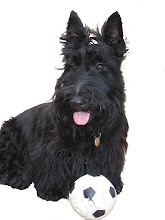










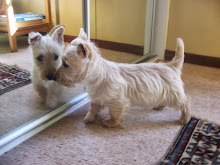



















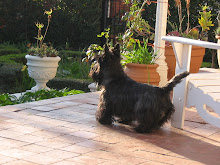






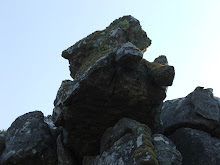





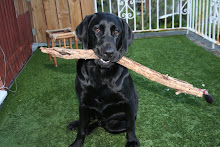





















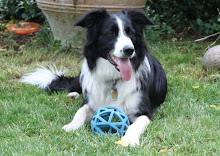

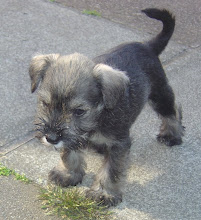













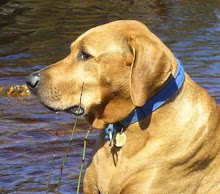




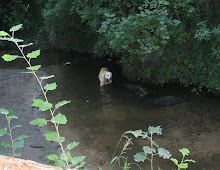



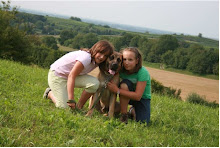

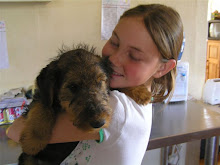








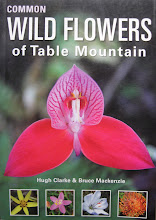


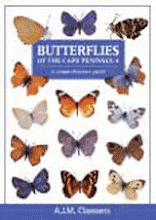






No comments:
Post a Comment